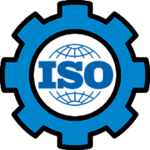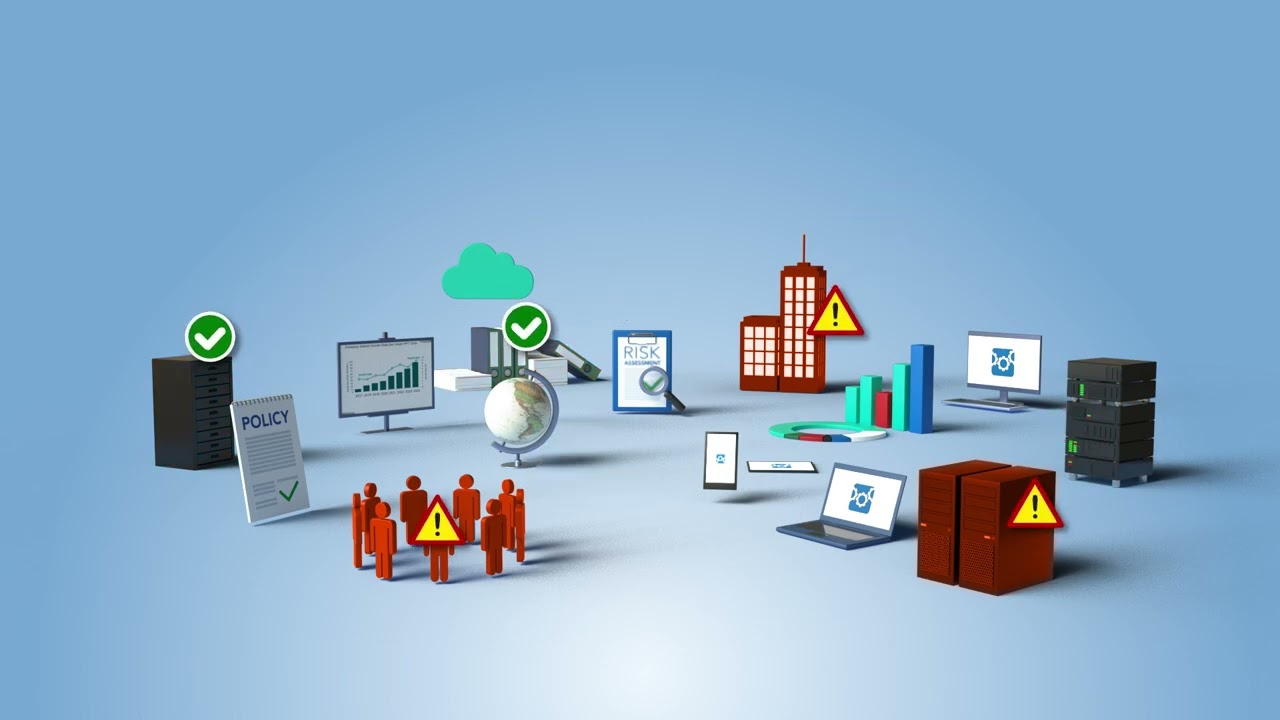Comprehensive Integrated Risk Management Solutions are available for all the world’s standards!
Table of Contents
ToggleOur risk assessment modules all participate in auto-mapping to the global compliance frameworks, saving you time and trouble. Even better, our real-time scoring, reporting, and dashboards help you stay current and compliant.
Build your own risk module easily, or use our preconfigured inventory covering:

ISO/IEC 31000
The ISO/IEC 31000 provides principles, a framework, and a process for managing risk. It can be used by any organization regardless of its size, activity, or sector.
Modules include:
- ISO/IEC 31000 Risk Management – Guidelines
Benefits & Features: ISO 31000
ISO 31000 is a risk management framework that offers a comprehensive and systematic approach to align risk management principles with your organization’s objectives and strategies. It creates a common language that ensures consistency across all levels and among key stakeholders. Utilizing ISO 31000 risk management guidelines leads to greater efficiency in managing threats, better decision-making around resources and practices, and increased trust.
This framework also assists in seamlessly being in compliance with legal and regulatory requirements. It also offers new opportunities with partners who will appreciate your organization’s demonstrated commitment to a strong security posture.
ISO 31000 Framework and Guidelines
The ISO 31000 framework is designed to easily integrate risk management into an organization’s overall management system. No matter the size or industry, these guidelines provide a systematic way to seamlessly implement effective risk management practices into your organization. It offers a clear process for identifying risks, analyzing and evaluating them, remediating them, monitoring systems, and having clear communication at every stage and every level.
These guidelines improve operational efficiency in risk identification and management. It allows an organization to better allocate resources and personnel. It creates compliance with other agencies or groups with high security standards, creating potential new opportunities.
Our Approach
Continuum GRC is deeply experienced in the risk management requirements needed for your organization to achieve certification with ISO 31000. We’ve worked with leading companies everywhere to streamline the process. We begin with an overall assessment of your current risk management system to see how it stacks up against this international standard.
The whole point of ISO 31000 is to be flexible, making compliance standards work within your business, no matter what size it is or what the focus is. Continuum GRC will help you leverage this structured framework in your management system, work with employees to understand requirements, and more.
FAQ
Who needs ISO 31000?
This particular risk management system is primarily designed for regulated industries such as finance, healthcare, or government organizations. Naturally, risk management consultants need to be compliant with these standards. But because it’s meant to be flexible and adaptable, ISO 31000 can also be used by any organization that wants a comprehensive way to address risk management.
Does ISO 31000 lead to risk management certification?
ISO 3100 is an international framework for risk management. It gives your company a way to develop and implement the particular standards required for certification by other organizations. Different certifications require different things, but ISO 31000 practices added to your management system provide an excellent foundation.
What are the benefits for risk managers?
Implementing ISO 31000 helps risk managers with better decision making in identifying threats and allocating resources more effectively. It better helps your organization adhere to legal and regulatory requirements, reduces losses, and makes it easier to recover in case of a data breach. This framework also creates enhanced confidence among key stakeholders within the organization.
How can ISO 31000 help with business continuity?
With this international standard for risk management in place, your business is better positioned to identify, assess, and address potential threats proactively. You can make more informed decisions about allocating resources to respond to any disruptions. This is a big step in maintaining continuity in your business.
Can ISO 31000 be applied to any organization?
This particular risk management framework has primarily been used within highly-regulated industries around the world like healthcare, finance, or government agencies. But its application is designed to be adaptable to all sizes and kinds of organizations who want an elevated, cohesive approach to risk management.
How does ISO 31000 support compliance with regulations?
The cohesive, streamlined framework provided by ISO 31000 addresses key areas of risk management. By adding them within your organization’s management system, you’re better positioned to attain the various regulations for different kinds of compliance. Think of ISO 31000 as a foundation for needed risk management strategies.
What are you waiting for?
You are just a conversation away from putting the power of Continuum GRC to work for you.
Contact us using the form below or calling us at 1-888-896-6207 for immediate assistance.
About the Standard
SO 31000:2018 provides a framework for risk management but is not a certifiable standard; it offers guidelines rather than strict requirements. Compliance with ISO 31000 involves adopting its principles, framework, and process to manage risks effectively within an organization. Below is a concise overview of the key components organizations should implement to align with ISO 31000:
1. Principles of Risk Management
- Integrated: Risk management should be embedded in all organizational activities.
- Structured and Comprehensive: Use a systematic approach to ensure consistency and reliability.
- Customized: Tailor the framework to the organization’s objectives, context, and risk profile.
- Inclusive: Involve stakeholders to ensure diverse perspectives and buy-in.
- Dynamic: Adapt to changes in the internal and external environment.
- Best Available Information: Base decisions on reliable, timely, and relevant data.
- Human and Cultural Factors: Account for human behavior and organizational culture.
- Continual Improvement: Regularly review and enhance risk management practices.
2. Risk Management Framework
To comply, organizations should establish a framework that integrates risk management into governance, strategy, and operations:
- Leadership and Commitment: Top management must demonstrate commitment by setting risk management policies, aligning them with objectives, and allocating resources.
- Integration: Embed risk management into all decision-making processes, including strategy, planning, and operations.
- Design: Develop a risk management plan that defines roles, responsibilities, and resources, tailored to the organization’s context.
- Implementation: Execute the plan effectively, ensuring clear communication and stakeholder engagement.
- Evaluation: Regularly assess the framework’s effectiveness through audits, reviews, or performance metrics.
- Improvement: Address gaps and adapt the framework to evolving risks and organizational needs.
3. Risk Management Process
The process for managing risks involves the following steps, which should be consistently applied:
- Communication and Consultation: Engage stakeholders to ensure shared understanding and informed decision-making.
- Scope, Context, and Criteria: Define the scope of risk management, understand internal/external contexts, and establish risk criteria (e.g., risk appetite, thresholds).
- Risk Assessment:
- Risk Identification: Identify potential risks that could affect objectives.
- Risk Analysis: Evaluate the likelihood and impact of risks.
- Risk Evaluation: Prioritize risks based on analysis and compare against risk criteria.
- Risk Treatment: Select and implement options to mitigate, avoid, transfer, or accept risks.
- Monitoring and Review: Continuously monitor risks, controls, and the effectiveness of the risk management process.
- Recording and Reporting: Document the process, outcomes, and decisions, and report to stakeholders for transparency and accountability.
4. Key Compliance Considerations
- No Certification: Unlike standards like ISO 9001, ISO 31000 is not certifiable. Compliance is demonstrated by adopting and applying its guidelines effectively.
- Customization: The standard emphasizes flexibility, so organizations must tailor the framework and process to their size, industry, and risk profile.
- Documentation: Maintain records of risk assessments, treatment plans, and reviews to demonstrate adherence.
- Stakeholder Engagement: Ensure active involvement of internal and external stakeholders to align risk management with organizational goals.
- Continual Improvement: Regularly update the risk management approach based on lessons learned, audits, or changes in context.
5. Practical Steps for Implementation
- Conduct a gap analysis to compare current practices against ISO 31000 guidelines.
- Develop or update a risk management policy and framework.
- Train employees and stakeholders on risk management principles and processes.
- Use tools like risk registers, heat maps from Continuum GRC to support risk identification and analysis.
- Align with other standards (e.g., ISO 9001, ISO 27001) if applicable, as ISO 31000 complements them.
Notes
- ISO 31000 is applicable to any organization, regardless of size, sector, or complexity.
- Compliance is voluntary but can enhance decision-making, resilience, and stakeholder confidence.
- For specific industries (e.g., finance, healthcare), additional regulations or standards may apply alongside ISO 31000.

